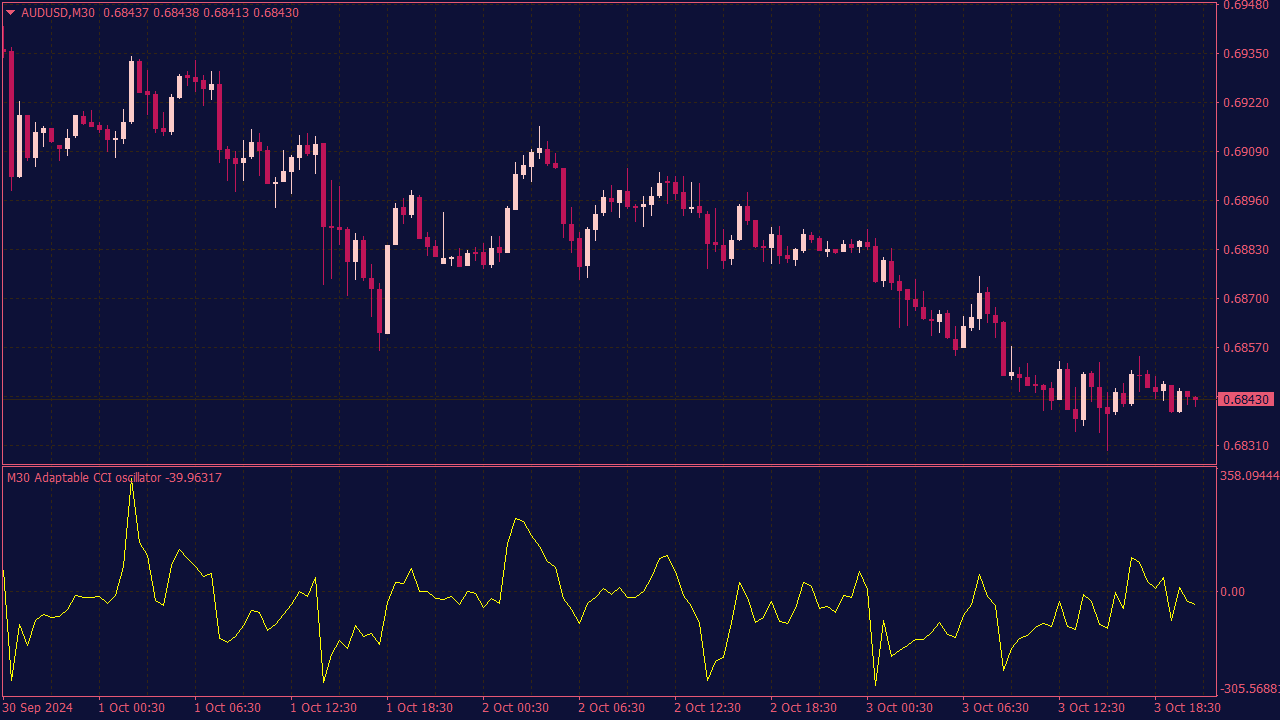Interactive Forex Book
1.2. CCI (Commodity Channel Index)
The Commodity Channel Index (CCI) is a versatile technical analysis indicator originally developed by Donald Lambert in 1980 to identify cyclical trends in commodity prices but has since been adapted for various financial markets, including stocks and currencies. The CCI measures the deviation of a commodity's price from its average price over a specific period, typically set at 14 days. The basic formula involves subtracting the Mean Absolute Deviation (MAD) of the price data from the current price and then dividing by a constant that standardizes the values, usually 0.015. The result produces a value that oscillates around zero, indicating overbought or oversold conditions.

CCI readings above +100 suggest an asset is overbought, while readings below -100 indicate it is oversold. This makes the CCI a valuable tool for traders looking to identify potential entry and exit points. Consequently, a trader might view a reading of +120 as a signal to sell, anticipating a price correction, while a reading of -120 could prompt a buy signal, expecting a reversal upward. Besides signaling extremes in price movement, the CCI can also reveal bullish or bearish trends; for instance, if the CCI consistently stays above zero, it indicates a strong uptrend, and vice versa.
Traders often combine CCI with other indicators, such as moving averages or the Relative Strength Index (RSI), to enhance accuracy. While CCI can be effectively used alone, its predictive power can be strengthened when corroborated by additional analysis. However, like all indicators, it is not foolproof and can generate false signals, especially in volatile markets. Therefore, effective risk management strategies, such as stop-loss orders, should accompany the use of CCI to mitigate potential losses.
The CCI's flexibility allows it to be applied across various time frames. Short-term traders might use a 5 or 10-day CCI to capitalize on fleeting price movements, while long-term investors may opt for a 30 or 60-day CCI to identify broader market trends. Additionally, the CCI can be adjusted for different asset classes, making it suitable whether one is trading commodities, stocks, or forex. Despite its strengths, traders must remain cautious of market conditions; the CCI can lag in trending markets, making it less effective when the price is consistently moving in one direction.
Understanding the CCI also requires awareness of its limitations. For one, divergences between the CCI and price can provide insights about potential trend shifts; for instance, if prices are making new highs while CCI shows lower highs, this may indicate weakening momentum. However, relying solely on divergences without considering broader market trends could lead to premature decisions. Moreover, the CCI can occasionally produce false breakouts, prompting traders to prematurely enter or exit positions, underlining the necessity for a comprehensive trading strategy.
In summary, the Commodity Channel Index serves as an essential tool for traders aiming to analyze market cycles and price trends. While it's a powerful indicator for spotting buying and selling opportunities, successful trading goes beyond merely reading CCI values; it necessitates understanding market context, integrating other tools, and adopting disciplined risk management practices. Its versatility and adaptability make it a popular choice among traders, but, like all technical indicators, it should complement a broader trading strategy rather than serve as a standalone decision-making tool. Continuous education and practice in using the CCI will enhance a trader's ability to interpret its signals effectively, thereby increasing the chances of successful market entries and exits.